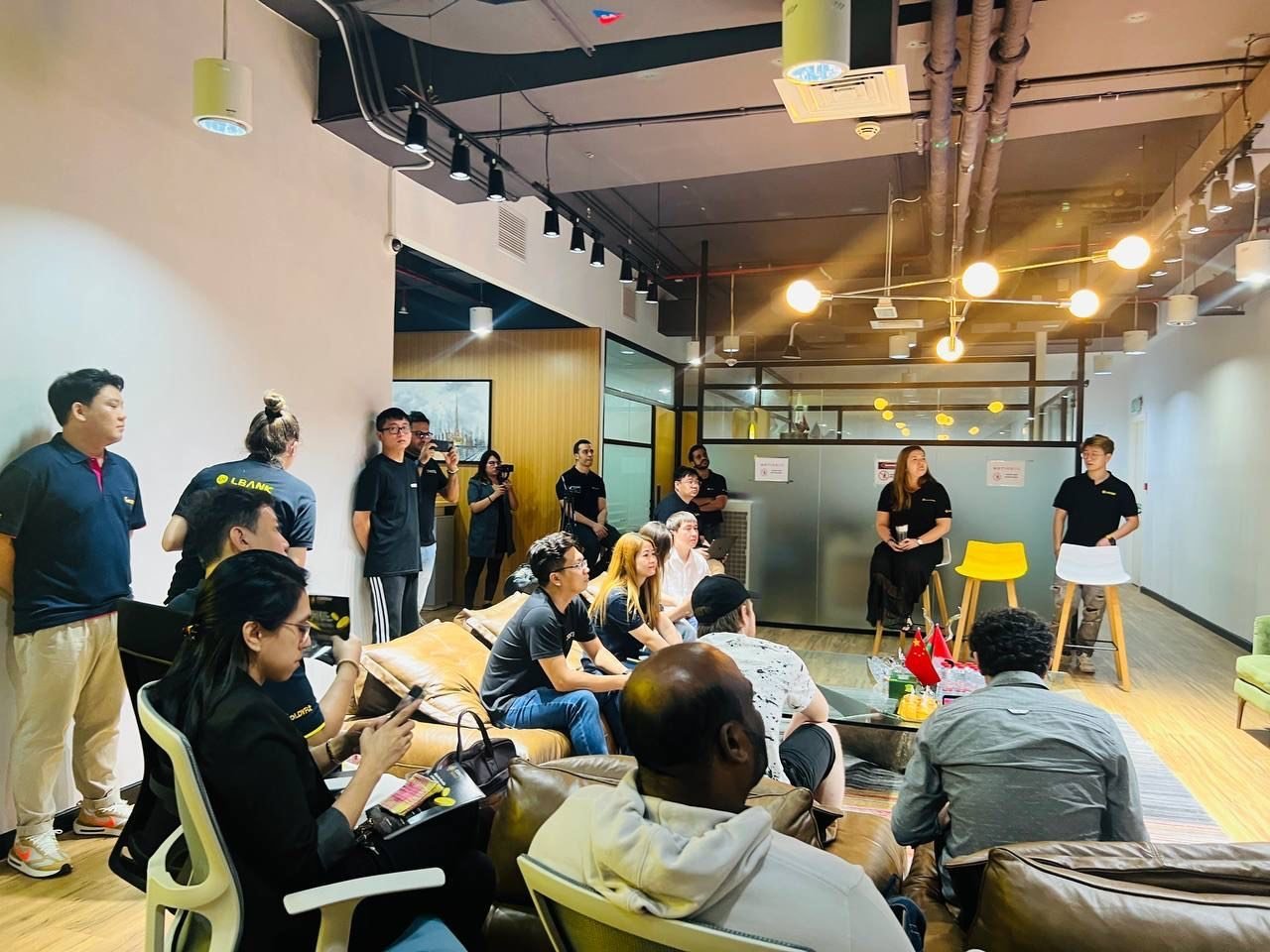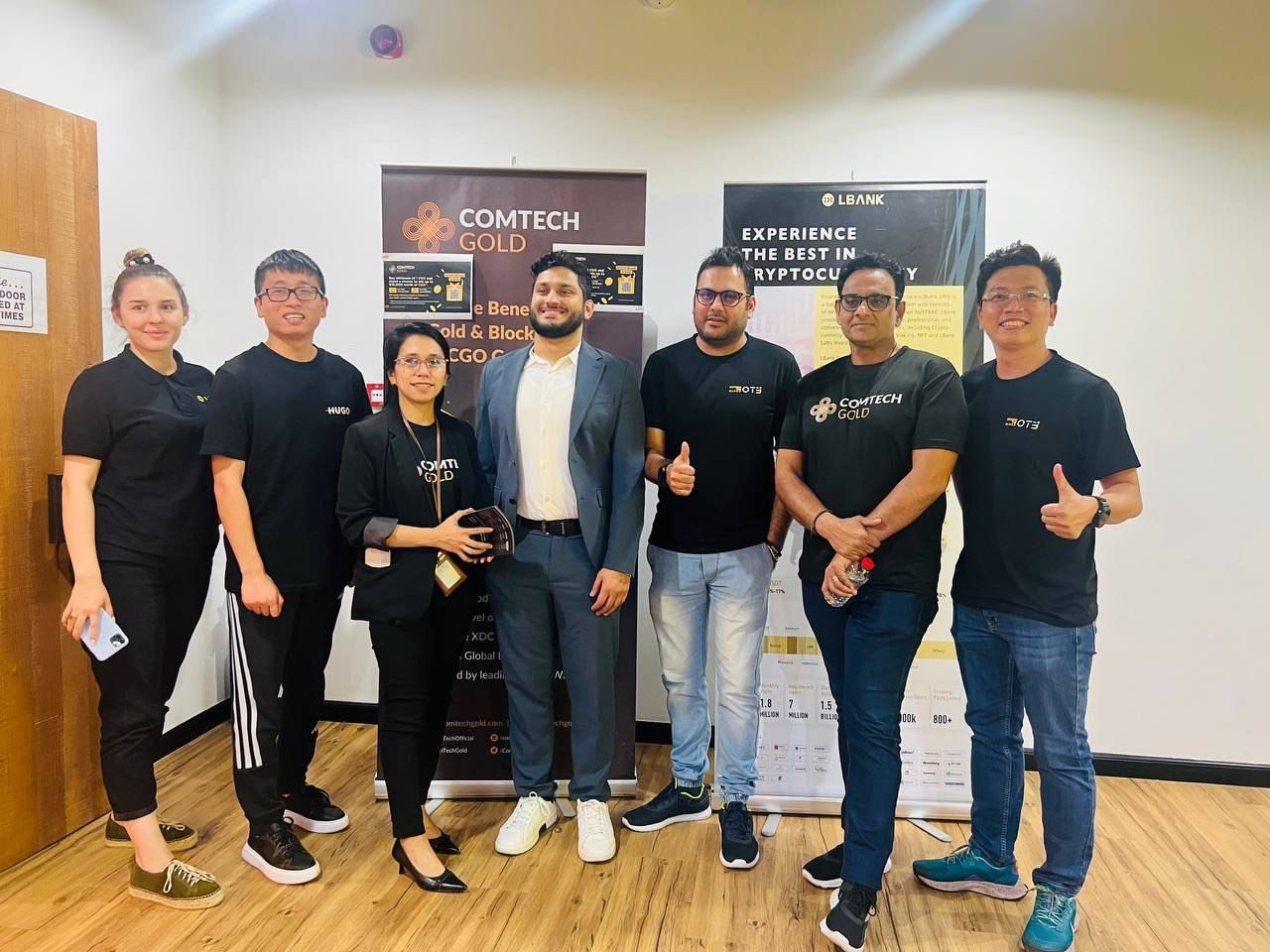Nodes From Underground
Inside a crypto pitch night in Dubai with two very different projects

above: Inside the LBank pitch night
A taking of the cultural pulse of the crypto community from artists to comedians to meet ups and beyond.
The offices in the Boulevard Plaza tower overlooking the Dubai Mall were mostly empty by 7:30 p.m. on a recent Friday. Only one room was bustling with more than a dozen crypto enthusiasts who gathered for the LBank Pitch Night.
The guests had gathered to hear from two featured projects that were almost at the extreme ends of the spectrum: one that seeks trust from government audits and depends on the lure of gold, and another that strives for complete decentralization and embraces the risks of crypto to its fullest.
Hong Kong-based Lbank, the 14th largest crypto exchange in terms of trading volume, hosts events like this one every so often to allow founders to introduce their ideas and answer questions from tentative investors.
“We try to expand through education, reaching out to new users in Africa, and events like today,” Peter Fang, the exchange’s marketing manager, told me.
After a few minutes of networking over pizza and cupcakes, the event started.
Comtech Gold took the floor. Its Head of Sales, Zulfiqar Naqvi, had a straight and simple pitch; the company issues a cryptocurrency representing gold, a token called CGO. Every CGO represents one gram of actual gold. The price of the currency is pegged to the international price of gold, Naqvi said, and the company keeps a reserve that ensures every token is redeemable.
Dressed in a corporate t-shirt carrying its logo, Naqvi assured everyone that the company’s gold reserves are audited quarterly. The auditor is the Transguard Group, a UAE state-owned security company. According to the last audit, Comtech owns 122 bars of gold, weighing 1 kilogram each.
“We found out that some companies prefer to reward their employees with our tokens,” Zulfiqar said.
He elaborated that the ease of trading and the concept of showing gratitude with a gift valued in real gold makes it an appreciated giveaway. Moreover, crypto gold can be traded much faster, with lower custodial and trading fees, and enable buyers to invest as low as the price of one gram only.
Next up was GTON Capital founder Alex Pipushev. His pitch was much more technical and complicated. He gave a short primer on blockchain technology, smart contracts, and decentralized applications, before explaining what he is building: a rollup, or layer 2 solution, for scaling and facilitating Ethereum transactions.
LBank pitch night participants
Pipushev was dressed in a white t-shirt, matching white ripped shorts, and dazzling glittery sneakers. He spoke with enthusiasm, trying to simplify his solution. Ethereum’s transactions become more expensive when the number of users increases. Moreover, Ether itself, the cryptocurrency used to pay for Ethereum transactions, is volatile. These are issues that make interacting with blockchain technology complicated for regular users and hinder mass adoption.
His solution is to build a Layer 2, or a parallel blockchain that is faster and cheaper, to execute transactions before reaching the main network. To make sure that the prices of the transactions are more predictable, GTON’s transaction will be paid by its stablecoin, pegged to one U.S. dollar.
“I know what you are thinking,” Pipushev said, “the collapse of Terra Luna.”
In May, the algorithmic stablecoin UST, issued by the Terra ecosystem, lost its peg to the dollar, and fell to near zero. The founder, Do Kwon, is currently on the run after Interpol issued a red notice for his arrest.
“Our stablecoin is different, we are building a decentralized over-collateralized stablecoin,” Pipushev explained to the audience. Clients deposit volatile cryptocurrencies like Bitcoin or Ether into a smart contract as collateral for a loan of a stablecoin that is worth one dollar each. For example, $150 worth of Ether would grant a customer $50 worth of GTON stablecoins.
The collateral is intended to keep the peg and is liquidated if the debt is not repaid or the value of the collateral falls under a predetermined threshold. The concept is not novel. Maker Dao first introduced it in 2015, creating of the most used stablecoins, DAI. Why not use it?
“The DAI is now a wrapper for another centralized stablecoin,” he said. In 2020, Maker Dao accepted the centralized stablecoin Tether, or USDT, as collateral. This makes it not truly centralized, according to Pipushev.
“In all cases, we need more stablecoins, the more there are, the more diversified the risk in the ecosystem,” Pipushev said as he ended his presentation.
The projects were striking for their dissimilarities. Do they cater to two completely different audiences? Can one find merit in both, and see the value of regulation vs. decentralization depending on contexts and use cases?
Only time will tell. At the end of the pitch night, everyone was more occupied with finishing up the pizza leftovers.

